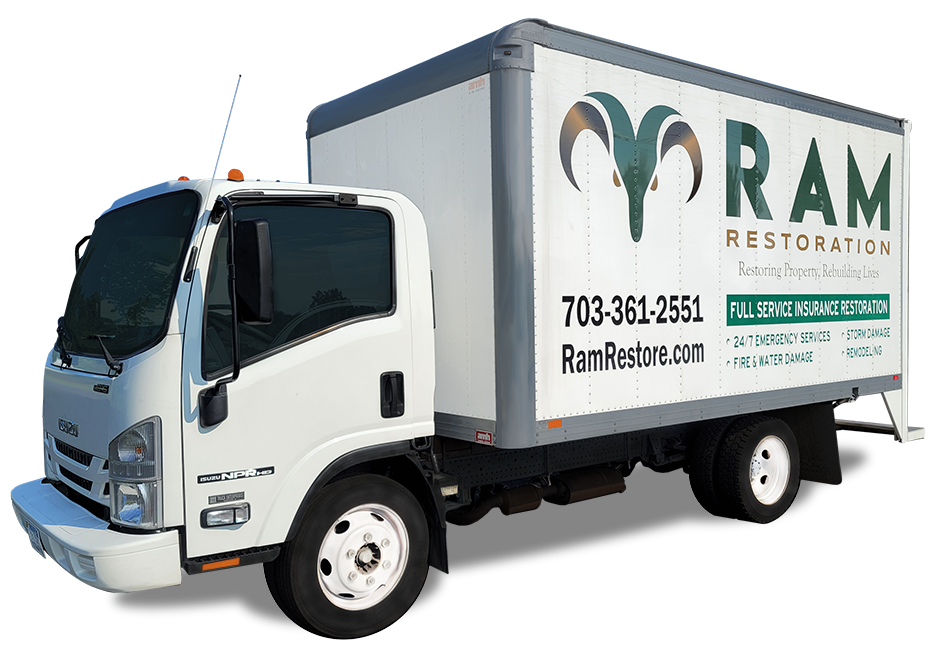After natural disasters, 70% of water-damaged places need mold remediation. This shows how important it is to understand the difference between restoration and remediation. Both are key in fixing damaged spaces, but they serve different purposes. Remediation removes pollutants to lessen health risks. It often includes dredging to clean contaminated sediments. On the other hand, restoration is about making natural areas healthy again after a contamination.
In dealing with environmental clean-up, knowing exactly what needs to be done is crucial. After Hurricane Harvey, many places that needed restoration were mistakenly thought to need remediation. This mix-up has real effects on recovery decisions. For instance, restoration often calls for specific actions like tearing out water-damaged walls to a specific height. This helps avoid more damage as time goes on. Quick water restoration within 24 hours is key. It limits damage and sets the stage for successful restoration efforts.
Key Takeaways
- Getting the hang of restoration and remediation is vital for fixing damaged properties.
- Remediation lowers health risks by removing harmful elements, often using dredging.
- Restoration works on building back environments for healthy life after a cleanup.
- Responding fast to water damage is crucial to avoid mold and bigger property issues.
- Environmental clean-up needs a precise plan and hard work to be successful.
- People are usually very happy with restoration services when they are timely and work well.
Understanding Remediation: The Initial Response to Pollution
Remediation is key in fighting pollution. It’s the first line of defense. It keeps people safe and protects nature. It quickly removes harmful substances to lessen their bad effects.
The Role of Remediation in Environmental Cleanup
Remediation stops pollution from getting worse. It uses methods like dredging to clean up water and land. Big organizations lead these efforts, working to lower pollution levels.
Effective Methods of Pollution Remediation
Pollution cleanup uses many methods. Dredging is common for taking out toxins from water. It does this without harming the area. Other methods, like bioremediation, break down pollutants naturally.
Collaboration Between Agencies for Remediation Efforts
Fixing pollution needs everyone to work together. Government and non-government groups share knowledge and resources. This teamwork is crucial for solving big environmental problems. It ensures effective cleanup and recovery.
Exploring the Process of Restoration After Remediation
After cleaning up pollutants, the work shifts to restoration. This step is key in not just fixing but also boosting natural areas. It aims to make ecosystems healthier and more diverse.
The Goals of Restoration for Natural Habitats
Restoration work focuses on creating a healthy ecosystem. Such efforts help nature help itself in the long run. This is done by fixing places that have been damaged.
It includes activities like planting native plants and building natural water areas. The goal is to create a place where wildlife thrives and biodiversity flourishes.
Construction Projects that Aid Environmental Restoration
Big restoration projects sometimes need building things. This can be making barriers to stop soil erosion. Or, it could be creating artificial reefs or shaping wetlands. These help ecosystems work better.
Restoration’s Impact on Local Economies and Communities
Restoration efforts do a lot more than fix the environment. They bring in tourists and raise property values. Plus, they create jobs in conservation and leisure.
These projects also make life better by keeping the air and water clean. This is good for everyone’s health.
Environmental restoration fights pollution and makes nature stronger against future harm. By building things that work with nature, these efforts are not only big but also long-lasting.
The focus is on creating ecosystems that can take care of themselves. This ensures a better environment for us, the animals, and the future.
The Differences Between Restoration and Remediation in Natural Disasters
After natural disasters, knowing the difference between restoration and remediation is key for recovery. It helps in quick response and the correct way to deal with mold and flood issues.
Restoration means fixing the building’s structure. In homes hit by floods, this might include taking out damp sheetrock and insulation. Restoration aims to bring properties back to their pre-disaster condition by focusing on repair.
On the other hand, remediation focuses on the health risks, like dealing with mold. Its goal is to clean and make the area safe from potential health dangers. These tasks include removing water, drying, and strategies to stop mold growth.
Insurances handle restoration and remediation differently, so it’s vital for homeowners to know their policies well. Normally, insurance is more likely to cover direct damage over broader cleanup unless there’s specific mention of mold or pollutants.
The method used in natural disaster response greatly affects how well the recovery goes, the safety of those involved, and how resilient the area is against future harm like mold or weakened structures.
What is the Difference Between Restoration and Remediation?
After events like floods or storms, two main methods help clean up the mess: restoration and remediation. Although both work to reduce harm, they have different goals and ways of doing things. They focus on fixing flood water damage, dealing with mold, and treating overall environmental harm.
Defining Restoration in the Context of Environmental Damage
Restoration aims to get things back to how they were before any harm happened. This could mean big repairs after floods or bringing back natural areas. These efforts can include rebuilding, planting trees, or creating places for wildlife to thrive. All of this helps treat environmental harm in a complete way.
Defining Remediation and Its Role in Environmental Treatment
Remediation is about stopping the main dangers that harm our health, like mold. It uses advanced techniques and tools to clean up soil, water, and air. The Environmental Protection Agency (EPA) oversees these important actions to prevent more harm.
Restoration and remediation work together, each handling a different part of cleaning up. While remediation deals with instant threats like mold, restoration plans for the future of the environment. They protect both people and nature, making sure our world stays healthy.
Case Studies: Remediation and Restoration Efforts Across America
In the U.S., cleaning up contaminated sites is a big job. Many case studies show the steps and results of fixing these places. This work involves many partners.
Successful Restoration Projects and Their Outcomes
After cleaning up, restoration work begins. The goal is to make the land like it was or close to it. The Duwamish River project shows how water and habitats can get better. This work is done by many groups working together.
Common Challenges Faced in Remediation
Remediation can face tough problems, like big costs and technical issues. The St. Lawrence River shows how hard it is to fix big areas of pollution. Working together and finding new ways are keys to solving these issues.
A table below has data from key case studies. It highlights how restoration and remediation protect American water bodies.
These studies highlight how cleaning contaminated sites and helping nature again can be done. Working together is key to success in these projects. Effective partnerships are very important.
Pricing Considerations in Remediation and Restoration Services
When dealing with remediation and restoration, it’s key to know the costs. This is true whether the issue is with the environment or pests. The amount needed to solve problems like a roach infestation can be very different. It depends on how bad it is and how you choose to get rid of them. Now, we’ll explore the various costs for homeowners and property managers.
Is It Expensive to Get Rid of Roaches?
The cost of getting rid of roaches can vary a lot. If you hire professionals, it could cost you quite a bit, especially for big infestations. Their services typically include checks, treatments, and return visits. These are to make sure the roaches are gone for good.
Average Cost to Eliminate Roaches and Restoration Expenses
Getting rid of roaches has various costs. This depends on how big the problem is and the method used. Simple chemical treatments are cheaper. But choosing eco-friendly options or using baits can cost more. The price might go up if there are also health concerns. This could mean extra work like mold removal, or fixing parts of the building.
- Initial Assessment: Inspecting the site to understand the extent of infestation and the best treatment plan.
- Treatment Application: Actual extermination processes which could include baits, traps, and sprays.
- Follow-up and Prevention: Ensuring roaches are eliminated and implementing measures to prevent future issues.
If significant work is needed, like after a big extermination, the costs go up. This includes the workers, parts, and any time the property can’t be used. These extra steps are vital for making the area safe again. They remind us that acting fast can both reduce health risks and save money on repairs later.
Having a realistic view of costs for roach removal prepares property owners for what’s ahead. It helps in planning a budget and dealing with the issue effectively. Whether it’s a small problem or a big one, knowing prices for these services is very useful.
Opting for Affordable and Effective Remediation Strategies
You don’t always need to spend a lot to get rid of cockroaches. Many homeowners are finding affordable ways to deal with roaches. These methods can help just as much as costly professional help. Let’s look at some low-cost yet effective ways to fight roaches.
Affordable Roach Control Options
Picking the right method is key for roach control on a budget. Things like boric acid and diatomaceous earth are great choices. They are cheap and work well. You can put these powders in spots roaches like, such as under sinks or around trash. This stops them from nesting in your home.
Cheap Ways to Exterminate Roaches: Do-It-Yourself Tips
Making sure your home is clean and dry is a simple way to keep roaches away. Roaches look for damp places with food. Regular cleaning can stop them from coming in. You can also make traps with coffee grounds in a jar. This is an easy and cheap method.
- Maintain cleanliness to eliminate food sources for roaches.
- Use natural roach repellents like catnip or bay leaves as a preventive measure.
- Seal cracks and crevices to prevent entry points for roaches into the home.
It’s good to know DIY ways can work. The table below shows how DIY compares to pro help. It looks at cost, how well each method works, and how long it lasts.
| Method | Cost Estimate | Effectiveness | Duration of Effect |
|---|---|---|---|
| Professional Extermination | High | Very High | Long-term |
| Boric Acid | Low | High | Medium to Long-term |
| Diatomaceous Earth | Low | High | Medium-term |
| Homemade Traps | Very Low | Medium | Short to Medium-term |
Looking at the table, professional help is very effective and lasts longest. But, DIY methods can offer good, ongoing results. They are a solid choice for those on a budget.
Conclusion
The close relationship between restoration and remediation is key for managing clean-up and damage repair. Both aim to make things safe and normal again, but they do this differently. Remediation focuses on stopping pollution fast, working within the first 24 to 48 hours after a problem starts. This quick action is crucial to preventing more harm to both property and health.
Restoration, however, comes in after the danger is under control. It’s about building things back up. This part not only fixes but also improves what was there before. It needs many skills, from building to fixing electrical issues. So, it’s important to hire experts for big repair jobs. The price for these repairs can change a lot, based on how much damage there is and what kind of improvements are wanted. For example, using water systems to reduce damage shows smart planning, stopping big problems before they start.
In the end, fixing spaces hit by disasters needs working together through both steps, remediation and restoration. Choosing a trusted restoration company is more than choosing help; it’s a critical move that can lessen the damage’s lasting effects. This partnership doesn’t just repair buildings but also brings back peace for property owners, making sure they come back to a place that’s safe, clean, and livable.







